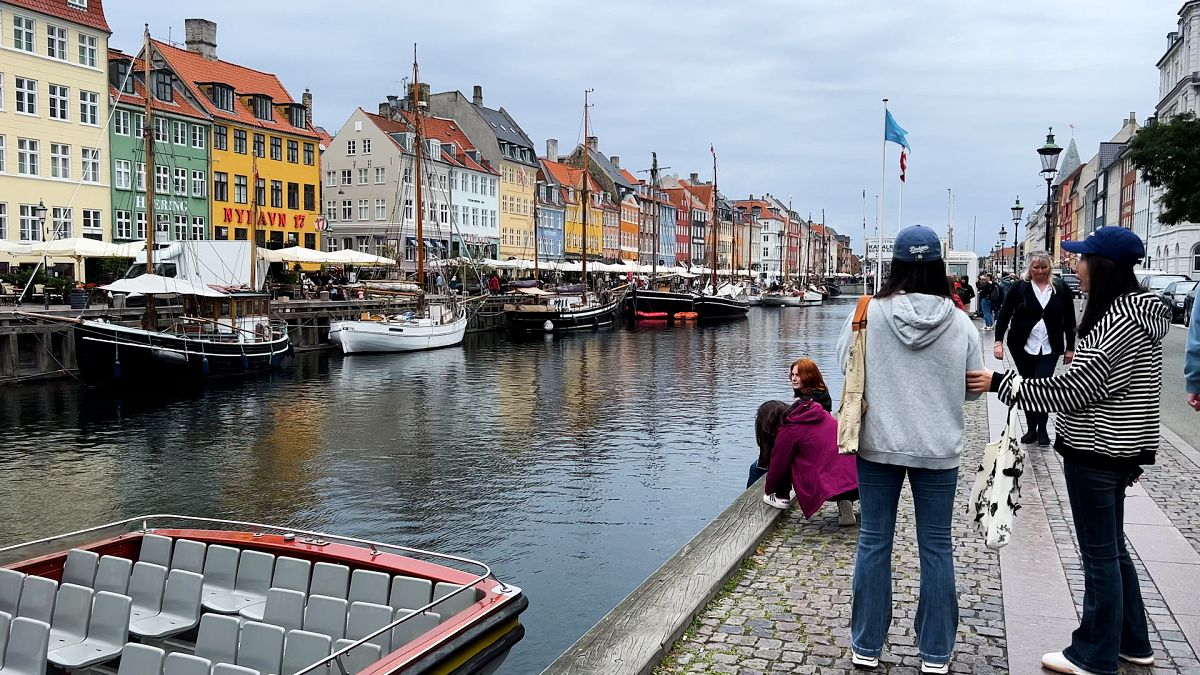Climate resilience: Copenhagen’s dream of a flood-proof city

The Danish capital is preparing for an upsurge in torrential rain over the coming decades due to climate change. Giant infrastructure is being built above and below ground to make the city more resilient to heavy downpours.
On July 2, 2011, the city of Copenhagen experienced what’s now known as ‘the storm of a thousand years’.
Within minutes, masses of water invaded streets and buildings, causing almost a billion euros worth of damage.
“We realised that year that Copenhagen was going to be hit by climate change, so we had the impacts analysed. It looks like we’ll have up to 30% more rain, and a multiplication of rainstorms that will have a large-scale impact on the city,” explains Jan Rasmussen, Project Director of the City of Copenhagen’s Climate adaptation plan.
The city has therefore launched a major plan to better manage the devastating downpours, known as cloudbursts, which are defined as rainfall of over 15 millimetres of in 30 minutes. The capital’s « cloudburst management plan » consists of a series of small and large-scale solutions, both technical and nature-based, above and below ground.
To increase the water capacity of its system, the city has launched the construction of several tunnels under the city. We visited a 1.3-kilometre-long tunnel that will link Copenhagen’s inland lakes to the far end of the harbour. It is due to open in 2026.
“When we have a lot of rain that hits the city, we can fill up the tunnel using it as a reservoir, so when we have more room in our system, we can send it to the water treatment plant. In case of really heavy downpour, we can also empty the tunnel into the harbour and it will have a conveying function,” explains Ditte Reinholdt Jensen, an expert in climate adaptation at HOFOR, the utility company in charge of these enormous projects.
The tunnel is estimated to cost 43 million euros. “What goes into constructing all of these, that is to be made up in the damages that we are preventing from happening,” underlines Ditte.
Another tunnel, built in the Valby district, has already proved its worth during a smaller cloudburst event on August 4, 2024, according to HOFOR.
Using the city’s surface to manage water
Other solutions are also being tested on the surface, such as the construction of rainbeds in residential areas. More permeable asphalt has also been tested to prevent water from remaining on the surface.
Some parks have been completely remodelled to cope with stormy weather. The historic Enghavepark, built almost a century ago, has been completely redesigned to become a 22,600 m3 water reservoir, the equivalent of eight Olympic-sized swimming pools.
The project is the result of extensive studies into the flow of water through the city’s various districts. The park is located downstream of the Carlsberg district, on a hill that can store 3,000m3 of water. In the event of overflow, water will be discharged downstream into this park.
“The water first runs down to this soccer field, then it will start running down to the lake. And finally down to the rose garden. If we need to store more water, the gates of the park will close and the whole park will be filled with water,” Jan Rasmussen explains in front of the concrete wall just under a metre high that surrounds the entire park.
With its historic lake, soccer pitch and gardens, the place doesn’t look like flood infrastructure, say the project’s promoters. “When we talked to the city architects about this project, we told them that this park should remain an integral part of the city. They said: ‘Wow, are you sure we can do this?’ But we did. This park doesn’t look like a water reservoir,” Rasmussen adds.
The water stored beneath the Enghavepark can be used to power a pump used by the city’s street-cleaning operatives. “We’re also expecting more heat waves, so we’re trying to combine all this into one plan,” explains Jan. The Danish capital is cooperating with other cities to share their experiences in climate adaptation, through C40 and other organisations.
“The work we’re doing doesn’t mean we can relax now. It is going to be a continued effort to cope with all of the rain that we are going to see in the future,” confirms HOFOR’s Ditte Reinholdt Jensen.
Towards a more systemic approach
Cities need to do more to protect themselves from climate risks and invest in urban societal resilience, according to the European Environment Agency (EEA), which published its 2024 report on urban adaptation for climate resilience in April.
“A lot of the actions that are taken today are still project-based. We need to make them more systemic. It’s a big challenge for cities, but a lot more will be needed over time,” according to Wouter Vanneuville, a climate change adaptation expert at the EEA, who calls on cities to multiply green spaces to counter the inherent impermeability of cities, but also to keep water in cities, in the form of fountains and canals.
In the last decade, 2021, 2022, and 2023 were among the top five years with the highest economic losses as a result of extreme weather events, mainly floods, according to the EEA.
“There is a lot of action happening on the ground. For several years, bigger cities are making and implementing plans, but now it’s also time for smaller cities, that don’t have the resources to have a dedicated team, to also implement them. There is a lot going on, but a lot more needs to be done,” the EEA expert concludes.
Source: Euro News














